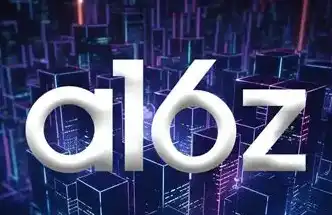Bitcoin ETFs Rebound as Institutional Confidence Resurges: A Strategic Buying Opportunity?
- Bitcoin ETFs face Q3 2025 volatility amid $1.2B outflows, but institutional holdings (e.g., Brevan Howard, Harvard) and SEC-approved spot ETFs signal growing legitimacy. - Price resilience stems from corporate accumulation (18% supply locked), LTH dominance (68% holdings), and technical indicators suggesting oversold conditions. - Macroeconomic factors like Fed rate cuts and the CLARITY Act reduce uncertainty, while Ethereum ETFs outperform due to deflationary supply and staking yields. - Strategic buy-t
The recent volatility in Bitcoin ETFs has sparked a critical debate: Is this dip a tactical entry point for long-term investors, or a warning sign of broader market fragility? To answer this, we must dissect the interplay of institutional flows, price resilience, and macroeconomic tailwinds shaping the crypto landscape.
Institutional Flows: A New Era of Legitimacy
Institutional adoption of Bitcoin ETFs has reached a tipping point. By Q2 2025, total institutional exposure hit $33.6 billion, driven by investment advisors (who now hold $17.4 billion) and hedge funds ($9 billion). Brevan Howard's 71% increase in BlackRock's IBIT stake to $2.3 billion and Harvard's $117 million allocation to the same fund underscore a seismic shift. These moves aren't speculative—they're strategic, treating Bitcoin as a core asset alongside gold and tech giants.
The SEC's 2024 approval of spot Bitcoin ETFs has been a game-changer. BlackRock's IBIT now dominates the space, capturing 96.8% of Q2 inflows with $86.3 billion in AUM. This regulatory clarity has transformed Bitcoin from a niche asset into a mainstream portfolio staple.
Price Resilience: Structural Strength Over Short-Term Noise
Despite a Q3 dip, Bitcoin's fundamentals remain robust. Corporate entities have accumulated 3.68 million BTC (18% of circulating supply), effectively removing it from active trading. This scarcity-driven dynamic, coupled with a 10.4% quarter-on-quarter increase in long-term holder (LTH) holdings, has created a structural price floor. By July 2025, Bitcoin's price stabilized at $123,561, with 92% of holdings in profit and 68% controlled by LTHs.
The recent $1.2 billion outflow in August 2025 was a reaction to Fed rate uncertainty, not a breakdown of fundamentals. A $219 million inflow on August 22—driven by bargain hunters—signals that institutional demand remains intact. Technical indicators, like Bitcoin's RSI dipping below 50, suggest oversold conditions, but the 50 EMA and 200 EMA crossover in Q4 2025 could reignite bullish momentum.
Macroeconomic Catalysts: Rate Cuts and Regulatory Tailwinds
The U.S. Federal Reserve's hawkish stance in August 2025 initially pressured Bitcoin ETFs, but the anticipated September rate cuts and a dovish pivot in Q4 2025 could reverse this trend. The CLARITY Act and President Trump's executive order unlocking $43 trillion in retirement assets for Bitcoin exposure have further reduced the “uncertainty premium” in pricing.
Ethereum ETFs, meanwhile, have outperformed Bitcoin in Q3, attracting $151 million in inflows versus Bitcoin's outflows. This reflects institutional rotation toward Ethereum's deflationary supply model and staking yields. A major whale's $2 billion shift from Bitcoin to Ethereum highlights this trend, with Ethereum's RSI remaining above 50 and its 20-day moving average acting as a critical support line.
Is This a Tactical Entry Point?
The answer lies in the interplay of structural strength and short-term volatility. For long-term investors, Bitcoin's price dip in Q3 2025 offers a compelling opportunity. The $123,561 floor in July and the 47% year-on-year hashrate increase signal network resilience. Corporate accumulation and institutional adoption (e.g., Harvard's Bitcoin-to-gold ratio) further reinforce Bitcoin's role as a hedge against inflation and dollar devaluation.
However, caution is warranted. The Fed's core PCE data on August 29 and September employment reports will dictate short-term sentiment. If inflation softens, ETF inflows could rebound. Conversely, persistent inflation may delay rate cuts, prolonging the dip.
Investment Advice: Balancing Risk and Reward
- Buy the Dip, Not the Noise: Allocate to Bitcoin ETFs at key support levels ($110,000, $105,400) if macroeconomic data aligns with a dovish Fed pivot.
- Diversify with Ethereum: Ethereum's institutional-grade metrics and utility-driven narrative make it a complementary play.
- Monitor On-Chain Signals: Track whale activity and MVRV ratios to identify accumulation phases.
- Lock in Regulatory Tailwinds: The inclusion of Bitcoin in 401(k) plans and corporate treasuries will drive sustained demand.
Conclusion
The Q3 2025 dip in Bitcoin ETFs is not a bearish signal but a recalibration. Institutional confidence, structural scarcity, and regulatory clarity have transformed Bitcoin into a strategic asset. While short-term volatility persists, the long-term trajectory remains bullish. For investors with a 3–5 year horizon, this dip presents a tactical entry point—provided they align their strategy with fundamentals, not fear.
As the Fed's policy timeline unfolds and institutional adoption accelerates, Bitcoin ETFs are poised to reclaim their role as a cornerstone of diversified portfolios. The question isn't whether to buy—it's how to buy wisely.
Disclaimer: The content of this article solely reflects the author's opinion and does not represent the platform in any capacity. This article is not intended to serve as a reference for making investment decisions.
You may also like
Macroeconomic structural contradictions are deepening, but is it still a good time for risk assets?
In the short term, risk assets are viewed bullishly due to AI capital expenditures and affluent consumer spending supporting earnings. However, in the long term, caution is advised regarding structural risks brought by sovereign debt, demographic crises, and geopolitical restructuring.

a16z predicts four major trends will be announced first in 2026
AI is driving a new round of structural upgrades in infrastructure, enterprise software, health ecosystems, and virtual worlds.

Bitcoin FOMO trickles back at $94K, but Fed could spoil the party

Beyond Cryptocurrency: How Tokenized Assets Are Quietly Reshaping Market Dynamics
Tokenization is rapidly becoming a key driving force in the evolution of financial infrastructure, with an impact that may go beyond short-term fluctuations, reaching the deeper logic of market structure, liquidity, and global capital flows.
